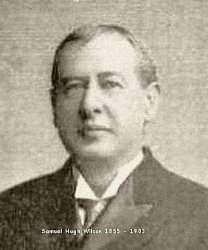
MAY CONTAIN NUTS

Search Shorpy
SHORPY ART

Framed or unframed, desk size to sofa size, printed by us in Arizona and Alabama since 2007. Explore now.
Join and Share
Ad-Free Shorpy
Shorpy is funded by you. Patreon contributors get an ad-free experience.
Learn more.

Recent comments
- Tough Guys
- Lost in Toyland
- And without gloves
- If I were a blindfolded time traveler
- Smoke Consumer Also Cooks
- Oh that stove!
- Possibly still there?
- What?!?
- $100 Reward
- Freeze Frame
- Texas Flyer wanted
- Just a Year Too Soon
- WWII -- Replacing men with women at the railroad crossing.
- Yes, Icing
- You kids drive me nuts!
- NOT An Easy Job
- I wonder
- Just add window boxes
- Icing Platform?
- Indiana Harbor Belt abides
- Freezing haze
- Corrections (for those who care)
- C&NW at Nelson
- Fallen Flags
- A dangerous job made worse
- Water Stop
- Passenger trains have right of way over freights?
- Coal
- Never ceases to amaze me.
- Still chuggin' (in model form)
Member Photos
The Shorpy
Print Emporium
Print Emporium
Search Shorpy
Search results -- 30 results per page
- John Bachman: 1911
- ... aged 12, as a pupil at St. John's Home, St Mark's Avenue, Brooklyn Ward 24, Kings County, New York. It is presumably the same boy, as ... Posted by Dave - 06/24/2008 - 10:52pm -
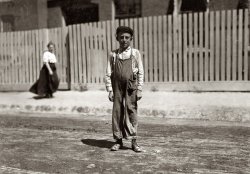
- Mickey Rooney: 1936
- ... We'll not see his like again. A grand run for a kid from Brooklyn.
A real gentleman I had the pleasure of meeting Mickey Rooney ... Posted by Dave - 04/07/2014 - 11:46am -
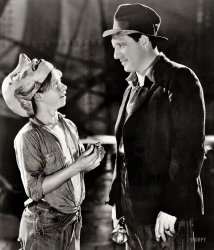
- Cucina Montefiori: 1938
- ... is just like the one my relatives (the Kramdens) had in Brooklyn in the 1950s.
Mussolini's anti-Jewish laws On September 1, ... Posted by Dave - 10/08/2018 - 2:21pm -
![Cucina Montefiori: 1938 1938. "New York, New York. John Montefiori's sister-in-law in her kitchen at 340 East 63rd Street. Mr. Montefiori, tenant and janitor of the building, works in a sculpture factory that turns out the little white horses for White Horse Whisky, etc." Medium format acetate negative by Sheldon Dick. View full size.
Yesterday's HeadlinesI realize this is a year before WW2 broke out, but I found the partial headline curious.
"(Because?) of Jews in ... " I couldn't make out the last word. Anyone have better eyes than me? I'm sure it has something to do with the plight of the Jewish people in Europe and the horrible future that awaits them.
[Last words of the headline are "Jews in Italy." - Dave]
Time marches onInteresting use for an old wood-burning stove.
[Coal stove! - Dave]
Keep the RoyalMrs. M and her sister probably insisted to Mr. M to keep the old stove right where it is. Having a nice steady 400 pound counter with, once the inside of that stove is clean and sparkly, a nice storage underneath. People of that era made do very nicely with what was at hand.
Mamma Mia!I'll bet Mamma Montefiori turned out wonderful Italian home cooking from that rudimentary kitchen--I know my grandmother did. On another note, that kitchen is just like the one my relatives (the Kramdens) had in Brooklyn in the 1950s.
Mussolini's anti-Jewish lawsOn September 1, 1938 Mussolini's Fascist regime implemented its first anti-Jewish law; thence forward, all Jews who had settled in Italy since 1919 were subject to expulsion. This law immediately affected at least 15,000 people, many of whom were German or Austrian refugees escaping Hitler.
A subsequent November 10, 1938 decree prohibited the employment of Jews, and prohibited Jews from owning businesses or real estate of more than a certain size, leading to the expropriation of 70% of Jewish owned property.
Perhaps one of these catastrophic events is what the headline is referring to, dating this photo to sometime in the fall of 1938(?).
[The date on the newspaper is July. - Dave]
Papal responseOn July 14 the Italian fascist government published the Manifesto della razza (Manifesto of Race). which stated that Italians were of "Aryan race," preparing the way for the enactment of the Racial Laws later that year. The next day Pope Pius XII responded to this, as reported in the New York Evening Star on July 17.
Apologies it was the Washington DC Evening Star
(The Gallery, Kitchens etc., NYC, Sheldon Dick)](https://www.shorpy.com/files/images/SHORPY-8c02081a.thumbnail.jpg)
- The Vestal: 1908
- ... bottle and christening the fleet collier Vestal at Brooklyn Navy Yard. May 19, 1908. View full size. George Grantham Bain ... Posted by Dave - 12/10/2007 - 5:03pm -
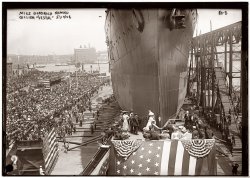
- Vanishing Point: 1921
- ... Majesty I have always been exposed to trains. Born in Brooklyn, under the EL, raised in Queens, home of the LIRR, and now living a ... Posted by Dave - 10/04/2011 - 1:06am -
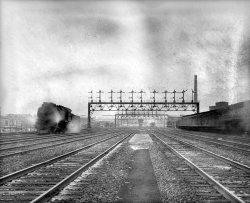
- Higher Powers: 1912
- ... caught by the woman in black.
In Spired Until the Brooklyn Bridge was built, the spire of Trinity Church was the tallest building ... Posted by Dave - 10/16/2019 - 8:53pm -
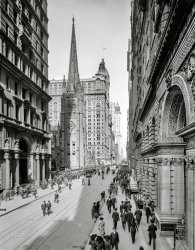
- Cod and Man: 1905
- ... he'd like to be served on a rare visit to our Bayridge Brooklyn apartment for dinner, replied Pluke Fisk (plooka fisk) - a thick soup ... Posted by Dave - 10/06/2019 - 12:33pm -
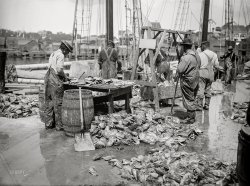
- East Sixty-Second: 1938
- ... Au contraire, Fathead. Of my last five apartments in Brooklyn all had laundry poles in the backyards; two were still being used for ... Posted by Dave - 10/06/2018 - 9:39am -
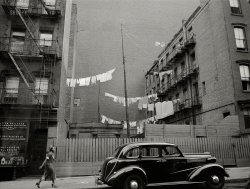
- Newspaper Row: 1905
- ... in 1955 for the expanded car ramp entrance to the Brooklyn Bridge.
The Tribune Building was torn down in 1966 to build One ... Posted by Dave - 05/22/2019 - 7:41pm -
![Newspaper Row: 1905 New York circa 1905. "Newspaper Row -- City Hall Park." Headliners include the Tribune, Times and domed New York World (Pulitzer) buildings. 8x10 inch glass negative. View full size.
DetailOf the architectural variety. Something I miss in today's metal and glass facades. There's plenty to interest the eye in those buildings. I'm not an architect, but I prefer the older buildings. Here in Boston, there are still a few by H H Richardson and his disciples.
For what it's worth, I like the Tribune building the best. I would have loved to explore its upper floors and climb the tower.
And What Happened to Those Buildings?The World Building was demolished in 1955 for the expanded car ramp entrance to the Brooklyn Bridge.
The Tribune Building was torn down in 1966 to build One Pace Plaza, the central building of the Pace University campus, as part of the urban renewal project that included the World Trade Center.
After the New York Times relocated to Times Square in 1905, the former Times Building was renamed 41 Park Row and enlarged. Architect Robert Maynicke designed the alteration, which included the removal of the original mansard roof and the inclusion of two additional stories. Today, Pace University occupies the building.
Multi-StoriedWhen this photo was taken, the New York Tribune Building (at center) had just been "supersized" to the height shown here; before 1903 it was merely 10 floors tall. It was more than doubled in height in 1903-1905, reusing architectural elements of the original structure -- like the entire tower. At the extreme right, the red-brick Potter Building of 1883-1886 still stands after being converted from offices to apartments.
And I Raise Your BidSpeaking of enlarging the New York Tribune Building -- am I correct that in this 1905 photograph the World [Pultizer] Building is being enlarged? To me it looks as if the building is being nearly doubled in size on the back side. I cannot find a reference to a later addition … as if it matters now. But it makes me think that in 1905 there was competition afoot.
LookoutsIt appears there are people at the top of the dome. If so, I'd imagine the view was worth the climb.
(The Gallery, DPC, NYC)](https://www.shorpy.com/files/images/SHORPY-4a18575a.thumbnail.jpg)
- Testing the Hoses: 1913
- ... Frederick Gooderson, wife of Deputy Chief Gooderson, of Brooklyn.
(The Gallery, Cars, Trucks, Buses, G.G. Bain, NYC) ... Posted by Dave - 09/08/2011 - 12:01pm -
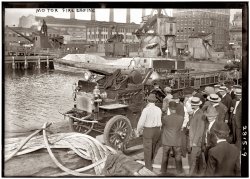
- Bon Appetit: 1908
- June 1908. Brooklyn, New York. "Mess kitchen, Fort Hamilton." Who wants some Bucket 13? ... Posted by Dave - 10/02/2012 - 10:00am -
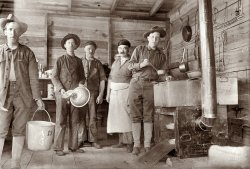
- Watchers: 1938
- ... as a prototype for an important New York structure. The Brooklyn Bridge (1883) was built after John A. Roebling designed and built a ... Posted by Dave - 07/16/2016 - 6:27pm -
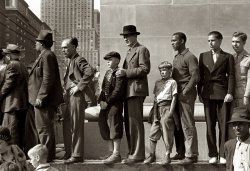
- Charna Sidelle Shear at 3½: 1928
- This photograph of my mother was taken in 1928 in Brooklyn, New York in an alley off of East 3rd Street. View full size.
... Posted by JESilverstein - 09/19/2011 - 11:04pm -
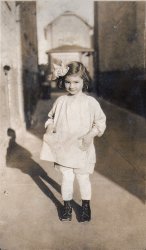
- Fulton Street: 1943
- ... a war on.....
Ah, the smell.. I was born in Brooklyn in 47, and on occasion, my dad would take me to the Fulton Fish ... Posted by Dave - 09/08/2011 - 8:33pm -
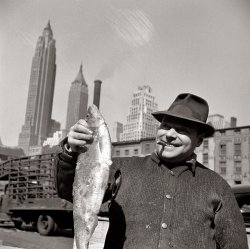
- Bright Star of Flatbush: 1948
- March 22, 1948. "Brooklyn Terminal Market, Flatbush. Manson Clay Products, client." Who must be ... Posted by Dave - 05/19/2014 - 8:42pm -
![Bright Star of Flatbush: 1948 March 22, 1948. "Brooklyn Terminal Market, Flatbush. Manson Clay Products, client." Who must be very proud. Gottscho-Schleisner photo. View full size.
NazSgt...we are alumni of the same school!!!
My dad attempted to teach my mother how to drive in the vacant lanes east of the market where the farmers would pull up their trucks. That was her one and only lesson as she almost lost control of the car. She gave up the idea of driving.
The market was always a good place to shop for certain items. I remember it getting very crowded in the spring with homeowners picking up their gardening supplies.
Driving Sgt McG's dadA few blocks from my high school (see John 1:46 for further). The markets were closed by two or three in the afternoon, a perfect place for my dad to teach me the fine art of driving a standard shift. Also where he picked up his fifty pound bags of potatoes, a staple for our family. There were still small farms in the area when I was a yute, long gone now.
That '42 BuickIs long in the teeth! I expect the war years have taken quite a toll on it!
Ain't FlatbushI was in my nappies in Flatbush in 1948 but the market is in Canarsie on Foster Avenue between E. 83rd and E. 87th Streets.
[Bright Star was on Center Market Street north of Foster, where East Flatbush and Canarsie come together. Neighborhood boundaries are subjective. To the photographers in 1948, this was Flatbush. - Dave]
East Flatbush ain't Flatbush neither. I know my neighborhood geographicals outta Holy Cross. Sister Mary Jean learned me.
Still quite busyView Larger Map
(The Gallery, Gottscho-Schleisner, NYC, Stores & Markets)](https://www.shorpy.com/files/images/SHORPY-5a14818u.thumbnail.jpg)
- The Goblins Next Door: 1911
- ... children on Thanksgiving in the book "A Tree Grows in Brooklyn."
When did dressing up make the jump to Halloween? Was it a ... Posted by Dave - 09/11/2011 - 9:28pm -
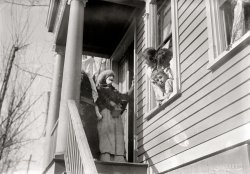
- Radio City Music Hall: 1932
- ... I loved taking the subway ride into Manhatten from Brooklyn. We always had lunch at a Horn & Hardart Automat.
Thanks for ... Posted by Dave - 07/13/2018 - 10:12pm -
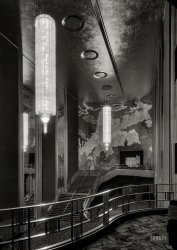
- On the Waterfront: 1900
- ... Building near the left of the photo, and the fact that the Brooklyn Bridge is out of view on the right, I would place this near the East ... Posted by Dave - 04/01/2014 - 8:19am -
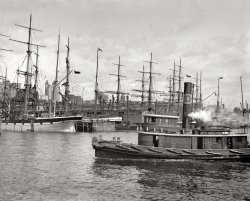
- Downtown: 1962
- ... pictured or built yet).
You can barely make out the Brooklyn Bridge at the very bottom of the photo.
Power Station ... Posted by Dave - 03/16/2017 - 8:56am -
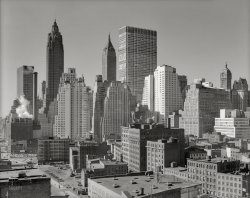
- Learning Curve: 1941
- January 21, 1941. "Brooklyn Public Library, Prospect Park Plaza. Balcony curve. Githens & ... Posted by Dave - 09/05/2012 - 7:07pm -
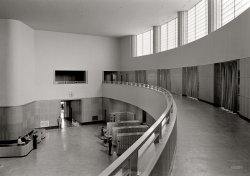
- X-Man: 1909
- February 12, 1909. "James Clarke, winner of Brooklyn Marathon, with others." View full size. 5x7 glass negative, George ... Posted by Dave - 08/19/2012 - 3:29pm -
![X-Man: 1909 February 12, 1909. "James Clarke, winner of Brooklyn Marathon, with others." View full size. 5x7 glass negative, George Grantham Bain Collection.
Strange CharactersThe four guys on the left look like characters in a silent film comedy. Guy with the thick eyebrows looks like a Marx brother, third guy looks like he's just seriously posing for the photo, second and fourth guys look like they're mocking third guy's pose.
Mister X has rather nice calves, but they look so silly under those socks and suspenders.
["Garters." - Dave]
A Debt of GratitudeThis photo points out to us the debt of gratitude we owe to whoever it was who invented elastic and to the person who had the bright idea to incorporate it into socks.
(The Gallery, G.G. Bain, NYC, Sports)](https://www.shorpy.com/files/images/03147u_0.thumbnail.jpg)
- Higher Lower Manhattan: 1912
- ... in the haze further right is the Williamsburg Bridge to Brooklyn. Also still standing.
Where is everyone? So many rooftops in ... Posted by Dave - 01/04/2017 - 1:19pm -
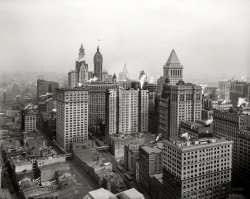
- War Bonds: 1918
- ... the Sackett-Wilhelms Lithographing and Publishing Co. in Brooklyn, N.Y. The machine blows air over cold coils ...
[The ducts are ... Posted by Dave - 07/05/2020 - 9:49am -
![War Bonds: 1918 Washington, D.C., circa 1918. "Liberty Loan bonds -- Bureau of Engraving and Printing." Financing the war effort. 8x10 inch glass negative, Harris & Ewing Collection. View full size.
Fan of fansI can never identify the cars, but being a fan geek I can tell you that these fans are made by a company named Robbins and Myers. (I knew you cared.) But I also need to admit that I've never seen the bottom third of a fan's cage covered the way some of these are, so I am unsure of the purpose and hoping someone here can educate us. Maybe it is intended to obstruct the lower portion of the fan's output, perhaps to minimize disruption of lighter items on the work surfaces, but that wouldn't really work because the output from these fans is not laminar. It would reduce overall air flow, but that's what the variable speed switch is for. Another guess is to catch dripping lubricant but I doubt that too because on these fans it would come from the front bearing and drip off the motor housing, or run down the base. While we're at it, I also do not know what the wire-like thing is running from the fan on the right to the column on which it is mounted. Geez, and prior to viewing this image, I thought I knew pretty much everything there is to know about antique electric fans!
Fan of Fan of FansShorpy doesn't have a "like" button [Actually we do, under each photo, although not for comments - Dave] so I am posting here that I appreciate kines' comment "Fan of Fans." Such enthusiasm! And such sadness upon recognition of not quite knowing everything! "Ask and answered, Your Honor!" (I had much the same question but much less of the knowledge.)
Ductwork at ceiling Must be an early A/C unit. In 1902 Carrier invents the the first modern AC for the Sackett-Wilhelms Lithographing and Publishing Co. in Brooklyn, N.Y. The machine blows air over cold coils ...
[The ducts are part of the building's heating system, which used a combination of steam radiators and forced-air ventilation. - Dave]
Any electrician know what the round unit is that is above each of what I assume is a fluorescent light.
[Those are mercury-discharge lamps. The cylinders house the ballasts. - Dave]
Division of LaborGirls to the left of me,
Girls to the right, here I am,
Stuck in the middle with you.
And now I am doomed to hear that tune for the rest of the day!
(The Gallery, D.C., Factories, Harris + Ewing, WWI)](https://www.shorpy.com/files/images/SHORPY-14035a.thumbnail.jpg)
- Me and Ramblin' Jack Elliott: 1966
- ... Elliot Adnopoz, in his 1949 Midwood High School Yearbook, Brooklyn. His address would have put him in the Erasmus Hall HS district, but ... Posted by Rip Tragle - 02/29/2020 - 9:08pm -
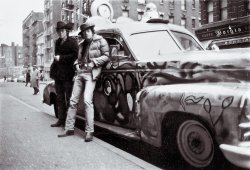
- Battling Mantell: 1911
- ... The 1930 U.S. Federal Census shows him at 246 Keap Street, Brooklyn, NY. It lists his profession as a Pugalist, Professional, and it also ... Posted by Dave - 08/10/2012 - 3:45pm -
![Battling Mantell: 1911 The boxer Battling Mantell in November 1911. View full size. George Grantham Bain Collection. So who can tell us about old Bat? He served in World War I.
Battling Mantell's record -- 20 fights, just one victoryHe went on to become a referee.
http://www.boxrec.com/boxer_display.php?boxer_id=185088
[I think that's an incomplete record. - Dave]
What a JockAs an athletic supporter, I wonder where's his punching bag and medicine balls.
Benjamin Baer MantellThis appears to be Benjamin Baer Mantell.
Searching through Veterans Records on Ancestry.com I found Benjamin B. Mantell at the Soldier's Home in Virginia in 1931 - 1932. It says that he was a Physical Instructor for his occupation, so this seemed like a good place to continue the search.
It says he was 5' 4 1/2" tall with brown hair and eyes and was of the Hebrew faith. He enlisted on February 14, 1914 as a Private in Company C, 15th U.S. Cavalry and was discharged on June 4, 1920.
The cause of his admission to the home says, "Mental Questionable," and what looks like, "Cebro Spinal Cervrio" (probably cerebro-spinal in current language).
Searching further records I found he was born on November 25, 1890 and died on November 2, 1959. He was buried in Long Island National Cemetery, Section V, Site 6732. He appears to never have been married.
The 1930 U.S. Federal Census shows him at 246 Keap Street, Brooklyn, NY. It lists his profession as a Pugalist, Professional, and it also shows him as a WWI Veteran.
His father was Russian and his mother Austrian, but I have not been able to find their names. His grandmother was Rebeca (Bessie) Mantell an aunt was Fannie Loefkowitz.
The boxing site below lists three Battling Mantells. It seems very unlikely that you would have three professional boxers all using the same name. Looking at the fight dates, only two of the fights are on consecutive dates so conceivably this is all one person fighting in two primary locations (usually New York and Pennsylvania). All of the fights are before he enlisted with the exception of three: one on the day he enlisted; one on May 11, 1914; and one on May 27, 1915. He could have been in the fight on May 11, 1914 prior to leaving for his enlistment, and he could have been in the fight on May 27, 1915 while on leave.
The Stars and Stripes, France, for Friday, May 10, 1918 states, "Before the main bout, Battling Mantell, New York lightweight now a cavalryman, was introduced." Note it does not say that he fought anyone that night.
With a middle name like "Baer" I'm surprised he didn't have a different fighting name.
(The Gallery, G.G. Bain)](https://www.shorpy.com/files/images/09914u.thumbnail.jpg)
- Lux Nocturna: 1933
- ... January 6, 1933. "Manhattan from St. George Hotel in Brooklyn to financial district, night view." 5x7 acetate negative by ... Posted by Dave - 12/19/2016 - 1:33pm -
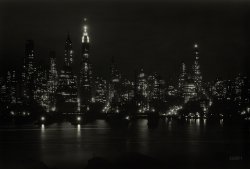
- Nash Flier: 1919
- ... 100 cities. The largest of these parades was the one in Brooklyn, New York where 3,051 trucks participated. The slogan was adopted in ... Posted by Dave - 07/02/2015 - 12:23pm -
![Nash Flier: 1919 October 1919. "Nash Flier -- California Highway Motor Train in San Francisco." A publicity stunt showcasing the nascent field of long-distance trucking as facilitated by the "giant pneumatic tire." The cargo here being Sperry's Drifted Snow Flour. 6½ x 8½ glass negative from the Wyland Stanley collection. View full size.
Nash placeWe're at the Civic Auditorium at Polk and Grove Sts., kitty-corner from City Hall. Though not on the fair grounds, it was built for the 1915 Panama-Pacific International Exposition and afterward given to the city. It was renamed the Bill Graham Civic Auditorium in 1991.
"Ship by Truck Week"The California Highway Motor Train event took place during the first "Ship by Truck Week" which took place during the last week of September and first two weeks of September in 1919. Yes, it was more than one week long. The slogan originated with Harvey S. Firestone, president of the Firestone Tire and Rubber Company of Akron, Ohio. The governors of 32 states issued official proclamations in honor of the week in their states. There were also truck parades in over 100 cities. The largest of these parades was the one in Brooklyn, New York where 3,051 trucks participated. The slogan was adopted in 1920 by the National Association of Motor Truck Sales Managers.
Part of the reason for having such a week was that the railroad industry was giving the trucking industry a hard time about using the public roads - despite the fact that individuals and companies that owned trucks were already paying higher road taxes. A trade ad in the Oakland Tribune on October 12, 1919 (Section O, Page 13) stated the following.
"When America went to war the motor truck gave the element of speed so vitally needed. By the thousands these land transports saved time, money, and lives and figured conspicuously in destroying the enemy of humanity.
"When the rail systems of America were over-burdened and sought assistance in the expeditious movement of foodstuffs and freight, it was the motor truck that quickly and efficiently answered the call.
"Yet a most bitter fight, sponsored by powerful railway interests, is being waged against the existence and growth of transportation of freight and passengers by automobile and motor truck in California. They would deny this superior transportation service the use of the public highway. Railroad attorneys have made it a point to attend Railroad Commission and [San Francisco] Board of Supervisor hearings wherein franchise matters were being discussed to prevent an increase in this means of [truck] transportation.
"The public must be awakened to a full realization of the dangerous tactics of the railroads in stifling the greatest advance in transportation methods that recent generations have known."
The article below from page 88 of the January 1920 issue of the magazine "Power Wagon" gives further details of the California Highway Motor Train.
(The Gallery, Cars, Trucks, Buses, San Francisco, W. Stanley)](https://www.shorpy.com/files/images/SHORPY-355-01.thumbnail.jpg)
- Tuskegee Airmen: 1945
- ... G. Clifton of San Francisco and Richard S. "Rip" Harder of Brooklyn. View full size.
Since they're in the Army Air Corps ... Posted by Don Wagoner - 01/26/2010 - 11:26am -
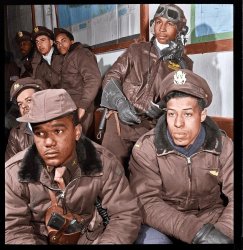
- City Hall Park: 1910
- ... if you stay on the downtown number 6 train past the Brooklyn Bridge terminus, the train uses the abandoned station to turn around ... Posted by Dave - 10/07/2019 - 12:07pm -
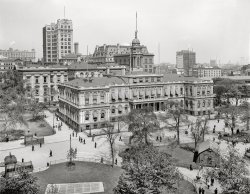
- Samuel Hugh Wilson
- ... within a year after he and his first wife were divorced in Brooklyn. He worked for the U. E. Hungerford Brass and Copper Company in ... was John S. Folk, the Police Superintendent of Brooklyn who died in 1885.
(ShorpyBlog, Member Gallery) ... Posted by wilso127 - 08/13/2010 - 12:16pm -
























